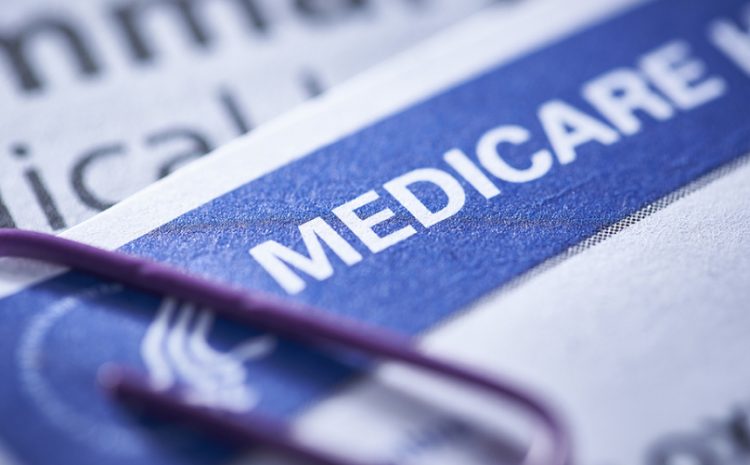

Principal writer, insurance and medicare advisory
MedicarePal principal writer Derick Dolivo covers Medicare. Smith believes in the power of education to help individuals make smart financial decis
- Written on August 10, 2025
- Updated August 17, 2025
At MedicarePal we strive to help you make smarter financial decisions. While we adhere to strict
Key Principles
We value your trust. Our mission is to provide readers with accurate and unbiased information, and we have editorial standards in place to ensure that happens. Our editors and reporters thoroughly fact-check editorial content to ensure the information you’re reading is accurate. We maintain a firewall between our advertisers and our editorial team. Our editorial team does not receive direct compensation from our advertisers.
MedicarePal follows a strict editorial policy, so you can trust that our content is honest and accurate. Our award-winning editors and reporters create honest and accurate content to help you make the right financial decisions. The content created by our editorial staff is objective, factual, and not influenced by our advertisers.
We’re transparent about how we are able to bring quality content, competitive rates, and useful tools to you by explaining how we make money.
Medicarepal is an independent, advertising-supported publisher and comparison service. We are compensated in exchange for placement of sponsored products and, services, or by you clicking on certain links posted on our site. Therefore, this compensation may impact how, where and in what order products appear within listing categories, except where prohibited by law for our mortgage, home equity and other home lending products. Other factors, such as our own proprietary website rules and whether a product is offered in your area or at your self-selected credit score range can also impact how and where products appear on this site. While we strive to provide a wide range offers, Bankrate does not include information about every financial or credit product or service.
Medicaid is a vital program in the United States that provides healthcare coverage to millions of low-income individuals and families. However, eligibility for Medicaid is not universal, and it is subject to specific guidelines and criteria set by both federal and state governments. This comprehensive guide will delve into the intricacies of Medicaid eligibility, exploring the key factors that determine who can access this essential healthcare safety net.
Medicaid Eligibility Basics
Medicaid is a joint federal and state program, which means that eligibility criteria can vary from one state to another. While states have some flexibility in determining eligibility rules, they must adhere to federal guidelines. At its core, Medicaid eligibility hinges on several key factors:
- Income: One of the primary determinants of Medicaid eligibility is income. Generally, individuals and families with incomes below a certain threshold are eligible for Medicaid. However, this threshold can vary significantly by state. Some states may adopt the Medicaid expansion under the Affordable Care Act (ACA), which allows eligibility for adults with incomes up to 138% of the federal poverty level (FPL). Others may have more restrictive income limits.
- Household Size: The size of your household, including the number of dependents, is a critical factor in determining eligibility. Generally, larger households may have higher income thresholds for Medicaid eligibility.
- Citizenship and Residency: To qualify for Medicaid, individuals must be U.S. citizens, U.S. nationals, or qualified immigrants with legal residency status. Additionally, you must be a resident of the state where you are applying for Medicaid.
- Categorical Eligibility: Medicaid eligibility is often determined by specific categories or groups. These categories may include low-income children, pregnant women, parents or caretaker relatives, individuals with disabilities, and the elderly. Depending on your circumstances, you may fall into one of these categories.
- Asset Limits: Some states impose asset or resource limits as part of their eligibility criteria. This means that individuals cannot have significant assets or property that exceed a certain value to be eligible for Medicaid.
- Special Programs: States may also have special Medicaid programs for specific populations, such as the Breast and Cervical Cancer Treatment Program or Home and Community-Based Services (HCBS) for individuals with disabilities.
Medicaid Expansion
The Medicaid expansion under the Affordable Care Act (ACA) has been a significant development in recent years. This expansion allows states to extend Medicaid eligibility to a broader range of low-income adults, including those without dependent children, with incomes up to 138% of the federal poverty level. As of my knowledge cutoff date in January 2022, many states had expanded Medicaid, while others had chosen not to do so.
The expansion has had several positive impacts, including:
- Increased Coverage: Medicaid expansion has extended coverage to millions of low-income adults who were previously ineligible for the program.
- Improved Access to Care: Expanded Medicaid coverage has led to increased access to primary and preventive care services, reducing the reliance on emergency rooms for basic healthcare needs.
- Economic Benefits: States that have expanded Medicaid have experienced economic benefits, including increased federal funding, job creation in the healthcare sector, and reduced uncompensated care costs for hospitals.
- Healthier Populations: The expansion has led to better health outcomes for beneficiaries and contributed to reducing the uninsured rate.
It’s important to note that the status of Medicaid expansion may change over time, as states reassess their policies and the federal government continues to evaluate healthcare reform efforts.
How to Determine Medicaid Eligibility
Determining your eligibility for Medicaid can be a complex process due to the variations in rules across states. To help you determine your eligibility, consider the following steps:
- Check Your State’s Guidelines: Each state has its own Medicaid program with specific income thresholds and rules. Visit your state’s Medicaid website or contact your state’s Medicaid office to access detailed eligibility information and resources.
- Use Online Tools: Many states offer online eligibility screening tools that allow you to input your information to determine whether you may qualify for Medicaid. These tools can provide preliminary guidance.
- Seek Assistance: If you find the eligibility rules confusing or have questions about your specific situation, consider seeking assistance from a certified Medicaid enrollment counselor or a healthcare navigator. These professionals are trained to help individuals and families navigate the Medicaid application process.
- Consult Healthcare.gov: The federal healthcare.gov website can also provide valuable information about Medicaid eligibility, particularly if you are in a state that uses the federal platform for enrollment.
Special Considerations
While the basic eligibility criteria mentioned earlier apply to most Medicaid beneficiaries, there are some special considerations and programs worth noting:
- Children’s Health Insurance Program (CHIP): CHIP is a separate program that provides healthcare coverage to low-income children whose families may not qualify for Medicaid but cannot afford private insurance. Eligibility criteria for CHIP can also vary by state.
- Medically Needy Programs: Some states offer Medically Needy programs for individuals or families with significant medical expenses. These programs may allow individuals to “spend down” their income by subtracting medical expenses from their total income to become eligible for Medicaid.
- Retroactive Eligibility: Medicaid benefits can sometimes be retroactive for up to three months before the month of application, allowing for coverage of past medical bills if the individual would have been eligible during that period.
- Long-Term Care: Medicaid is a significant source of funding for long-term care services, including nursing home care and home and community-based services (HCBS) for eligible seniors and individuals with disabilities.
- Emergency Medicaid: Some states provide Emergency Medicaid to cover the costs of emergency medical services for individuals who do not otherwise meet Medicaid eligibility criteria.
- Presumptive Eligibility: Some states offer presumptive eligibility for pregnant women, allowing them to receive immediate temporary Medicaid coverage while their full eligibility is being determined.
The Application Process
Once you have determined your eligibility for Medicaid, you can proceed with the application process. The application process may vary depending on your state, but here are some general steps to follow:
- Gather Required Documents: Before applying, gather all necessary documents, including proof of identity, income, residency, citizenship or immigration status, and any other relevant information.
- Choose Your Application Method: You can typically apply for Medicaid through one of the following methods:
- Online Application: Many states offer online portals where you can complete and submit your Medicaid application electronically.
- Phone Application: You can apply over the phone by contacting your state’s Medicaid office or the national healthcare.gov helpline.
- Paper Application: Some states provide paper application forms that you can fill out and mail or deliver in person.
- In-Person Application: If your state has local Medicaid offices or enrollment centers, you can apply in person with the assistance of staff.
- Complete the Application: Whether you apply online, by phone, on paper, or in person, provide accurate and complete information on the application form. Be prepared to answer questions about your income, household, and other relevant details.
- Submit Required Documents: If your application requires supporting documentation, be sure to include copies of the necessary documents.
- Follow Up: After submitting your application, follow up with your state’s Medicaid office if you do not receive a response within the expected timeframe. It’s essential to ensure that your application is processed promptly.
Application Review and Determination
Once your Medicaid application is submitted, it undergoes a thorough review by your state’s Medicaid agency. During this process, the agency will verify the information you provided, such as income, household size, and other eligibility factors. This review can take some time, so patience is key.
In some cases, the Medicaid agency may contact you for additional information or documentation to complete the eligibility determination. It’s crucial to respond promptly to any requests to avoid delays in the application process.
After the review is complete, you will receive notification from the Medicaid agency regarding the outcome of your application. If you are approved, you will receive a Medicaid card and information about your coverage, benefits, and how to access healthcare services.
Maintaining Your Medicaid Coverage
Securing Medicaid coverage is a significant achievement, but it’s essential to understand that maintaining your coverage requires ongoing attention. Here are some key points to keep in mind:
- Report Changes: Notify your state’s Medicaid agency promptly if there are any changes in your circumstances, such as changes in income, household composition, or address. Failure to report changes can result in coverage disruptions.
- Renew Your Coverage: Medicaid eligibility is typically reviewed periodically, and you will receive notices from the Medicaid agency when it’s time to renew your coverage. Follow the renewal instructions carefully to avoid coverage lapses.
- Use Your Medicaid Card: Present your Medicaid card to healthcare providers when seeking medical services to ensure that your coverage is billed correctly.
- Understand Your Benefits: Familiarize yourself with the services and benefits covered by Medicaid to make the most of your healthcare coverage.
Medicaid is a lifeline for millions of low-income individuals and families in the United States, providing access to essential healthcare services. Understanding Medicaid eligibility is the first step toward accessing this critical program. By navigating the complex criteria, gathering necessary documentation, and completing the application process accurately, you can secure the healthcare coverage you need. Additionally, staying informed about changes in Medicaid policies and staying engaged with your state’s Medicaid agency can help you maintain your coverage and ensure that you receive the care you deserve. Remember that Medicaid is designed to be a resource that promotes health and well-being, and it can make a significant difference in the lives of those it serves.
Was this page helpful?
Medicare Pal adheres to stringent sourcing guidelines, prioritizing primary sources including medical organizations, government agencies, academic institutions, and scholarly journals with peer review. Discover the methods we use to guarantee the accuracy, comprehensiveness, and impartiality of our content in our editorial guidelines.

Do You Need Help With Medicare?
Call us Now 1-866-706-7293











